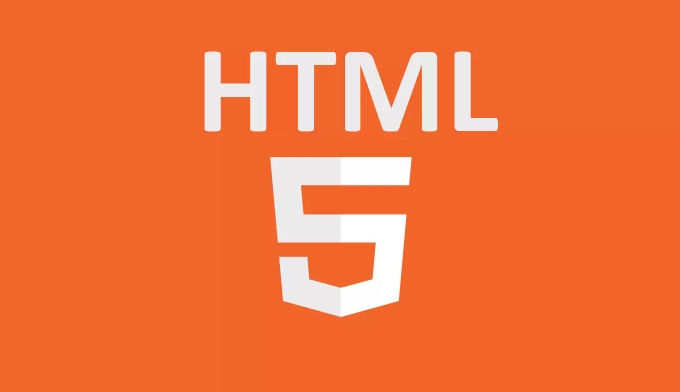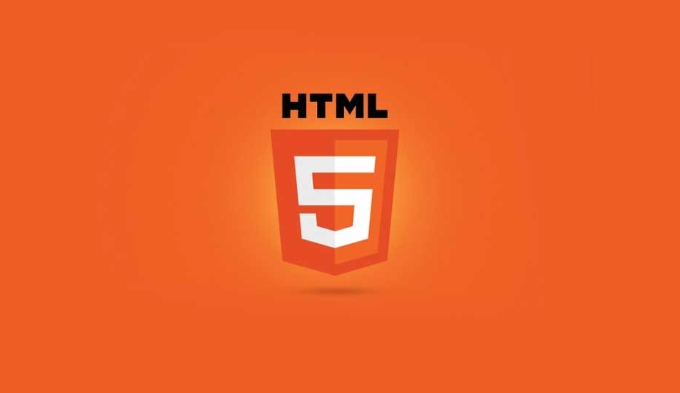HTML5's data attribute is a standard way to store custom data on page elements. 1. It starts with data-, such as data-user-id. The data is invisible to the user but can be accessed through JavaScript; 2. Use the dataset attribute to read or set the data, and the hyphen is converted to camel; 3. Suitable for front-end template rendering, component state management, interactive control and other scenarios; 4. Notes include avoiding storing sensitive or large amounts of data, preventing naming conflicts, paying attention to data type conversion, and reasonable use to avoid performance problems. Correct use of data attributes can make front-end logic clearer and more concise.

HTML5's data attribute is a very practical feature that allows you to store custom data on HTML elements without the need for additional JavaScript objects or global variables. Not only does it have a clear structure, it also makes the front-end logic simpler.

What is a data attribute?
The data attribute is a standard way in HTML5 to embed custom data on page elements. This data is not visible to users, but can be easily accessed and manipulated through JavaScript.

The naming rule starts with data- followed by a property name you defined, such as:
<div data-user-id="123" data-role="admin"></div>
The browser automatically recognizes these properties as legitimate HTML properties and does not affect page rendering.

How to read and set data properties?
You can access data through dataset property of JavaScript.
For example:
const element = document.querySelector('div'); console.log(element.dataset.userId); // Output: "123" console.log(element.dataset.role); // Output: "admin"
Note: A hyphen (such as data-user-id ) in the attribute name will be converted to camel ( userId ).
The setup is also very simple:
element.dataset.userId = '456'; element.dataset.newKey = 'newValue';
This will automatically update or add the corresponding data attribute on the DOM.
Which scenarios are suitable for using data attributes?
- Front-end template rendering : When rendering on the server, some initial data can be placed in the data attribute for front-end JS initialization.
- Component status management : For example, information such as the status of the button, whether it has been loaded, can temporarily exist on the DOM.
- Interactive control : For example, after clicking a menu item, you need to pass certain parameters, which can be stored and read directly using data.
- SEO or accessibility assistance : Although sensitive information is not recommended, non-public meta information can be saved in this way.
Of course, avoid storing large volumes of data or sensitive content because they are exposed to source code.
Notes on using data attributes
Only use data related to the current page context : do not use it to persistent storage, and refresh the page will be gone.
Be careful when naming conflicts : try to use module or functional prefixes, such as
data-cart-item-idinstead ofdata-id.Types are strings : If you need a number or a boolean value, remember to convert it manually:
const id = parseInt(element.dataset.userId, 10); const isActive = element.dataset.active === 'true';
There is little performance problem, but don't abuse it : If you have thousands of elements with a large number of data attributes, it may affect rendering speed or memory footprint.
Basically that's it. The data attribute is simple to use, but it can play a good auxiliary role in actual projects, especially in front-end collaboration and component communication.
The above is the detailed content of How to use the HTML5 Data attributes for custom data.. For more information, please follow other related articles on the PHP Chinese website!

Hot AI Tools

Undress AI Tool
Undress images for free

Undresser.AI Undress
AI-powered app for creating realistic nude photos

AI Clothes Remover
Online AI tool for removing clothes from photos.

Clothoff.io
AI clothes remover

Video Face Swap
Swap faces in any video effortlessly with our completely free AI face swap tool!

Hot Article

Hot Tools

Notepad++7.3.1
Easy-to-use and free code editor

SublimeText3 Chinese version
Chinese version, very easy to use

Zend Studio 13.0.1
Powerful PHP integrated development environment

Dreamweaver CS6
Visual web development tools

SublimeText3 Mac version
God-level code editing software (SublimeText3)

Hot Topics
 What is Microdata? HTML5 Explained
Jun 10, 2025 am 12:09 AM
What is Microdata? HTML5 Explained
Jun 10, 2025 am 12:09 AM
MicrodataenhancesSEOandcontentdisplayinsearchresultsbyembeddingstructureddataintoHTML.1)Useitemscope,itemtype,anditempropattributestoaddsemanticmeaning.2)ApplyMicrodatatokeycontentlikebooksorproductsforrichsnippets.3)BalanceusagetoavoidclutteringHTML
 Microdata in HTML5: The Key to Better Search Engine Ranking
Jun 12, 2025 am 10:22 AM
Microdata in HTML5: The Key to Better Search Engine Ranking
Jun 12, 2025 am 10:22 AM
MicrodatasignificantlyimprovesSEObyenhancingsearchengineunderstandingandrankingofwebpages.1)ItaddssemanticmeaningtoHTML,aidingbetterindexing.2)Itenablesrichsnippets,increasingclick-throughrates.3)UsecorrectSchema.orgvocabularyandkeepitupdated.4)Valid
 Audio and Video: HTML5 VS Youtube Embedding
Jun 19, 2025 am 12:51 AM
Audio and Video: HTML5 VS Youtube Embedding
Jun 19, 2025 am 12:51 AM
HTML5isbetterforcontrolandcustomization,whileYouTubeisbetterforeaseandperformance.1)HTML5allowsfortailoreduserexperiencesbutrequiresmanagingcodecsandcompatibility.2)YouTubeofferssimpleembeddingwithoptimizedperformancebutlimitscontroloverappearanceand
 Audio and Video : What about browser compatibility?
Jun 11, 2025 am 12:01 AM
Audio and Video : What about browser compatibility?
Jun 11, 2025 am 12:01 AM
Browser compatibility can ensure that audio and video content works properly in different browsers by using multiple formats and fallback strategies. 1. Use HTML5 audio and video tags and provide multiple format sources such as MP4 and OGG. 2. Consider automatic playback and mute strategies and follow the browser's policies. 3. Handle cross-domain resource sharing (CORS) issues. 4. Optimize performance and use adaptive bit rate streaming media technologies such as HLS.
 Audio and Video: can i record it?
Jun 14, 2025 am 12:15 AM
Audio and Video: can i record it?
Jun 14, 2025 am 12:15 AM
Yes,youcanrecordaudioandvideo.Here'show:1)Foraudio,useasoundcheckscripttofindthequietestspotandtestlevels.2)Forvideo,useOpenCVtomonitorbrightnessandadjustlighting.3)Torecordbothsimultaneously,usethreadinginPythonforsynchronization,oroptforuser-friend
 Adding Audio and Video to HTML: Best Practices and Examples
Jun 13, 2025 am 12:01 AM
Adding Audio and Video to HTML: Best Practices and Examples
Jun 13, 2025 am 12:01 AM
Use and elements to add audio and video to HTML. 1) Use elements to embed audio, make sure to include controls attributes and alternate text. 2) Use elements to embed video, set width and height attributes, and provide multiple video sources to ensure compatibility. 3) Add subtitles to improve accessibility. 4) Optimize performance through adaptive bit rate streaming and delayed loading. 5) Avoid automatic playback unless muted, ensuring user control and a clear interface.
 What is the purpose of the input type='range'?
Jun 23, 2025 am 12:17 AM
What is the purpose of the input type='range'?
Jun 23, 2025 am 12:17 AM
inputtype="range" is used to create a slider control, allowing the user to select a value from a predefined range. 1. It is mainly suitable for scenes where values ??need to be selected intuitively, such as adjusting volume, brightness or scoring systems; 2. The basic structure includes min, max and step attributes, which set the minimum value, maximum value and step size respectively; 3. This value can be obtained and used in real time through JavaScript to improve the interactive experience; 4. It is recommended to display the current value and pay attention to accessibility and browser compatibility issues when using it.
 HTML audio and video: Examples
Jun 19, 2025 am 12:54 AM
HTML audio and video: Examples
Jun 19, 2025 am 12:54 AM
Audio and video elements in HTML can improve the dynamics and user experience of web pages. 1. Embed audio files using elements and realize automatic and loop playback of background music through autoplay and loop properties. 2. Use elements to embed video files, set width and height and controls properties, and provide multiple formats to ensure browser compatibility.






